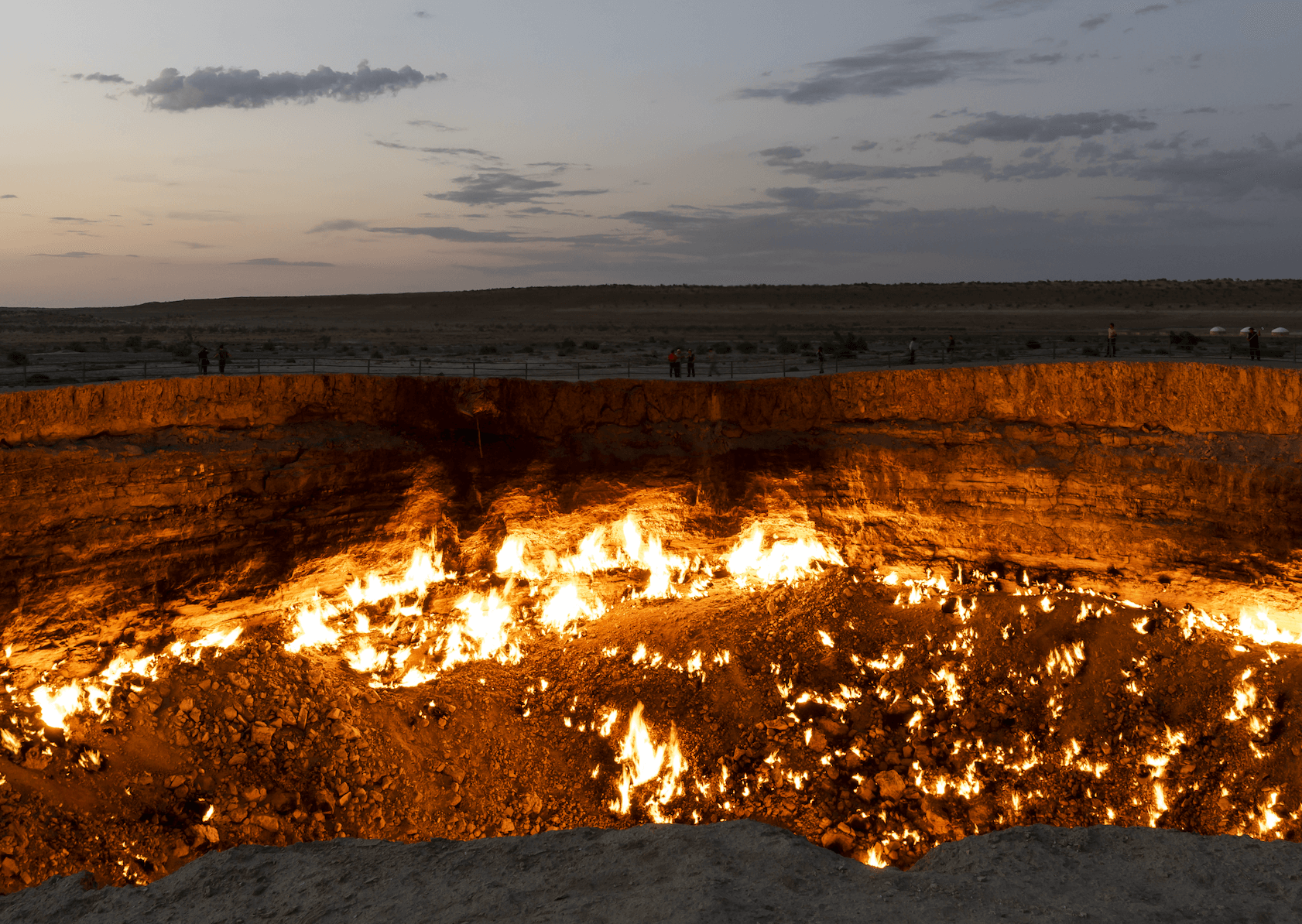The Darvaza “Gates of Hell” gas crater in Turkmenistan has been making headlines after the country’s President Gurbanguly Berdymukhamedov vowed to extinguish its flames after some (give or take) 50 years.


But how much CO2 emissions is Darvaza really emitting? And how do these emissions compare with those of unburnt methane escaping from the country’s oil and gas production, for which Turkmenistan has also been making headlines?

Kayrros data show that in 2018, the crater released 50,500 tons of CO2 from flaring and combustion within the pit, a number equivalent to the annual CO2 emissions rate of approximately 11,000 passenger cars (assuming that each car drives about 11,500 miles per year). Darvaza’s CO2 emission rates have been steadily declining since then, dropping to 37,600 tons of CO2 in 2021, most likely due to depleting levels or changing flows of the burning natural gas.
That may sound like a lot, but Kayrros Methane Watch shows methane emissions from the country’s onshore oil and gas operations totaled about ~5 million tons in 2021, equivalent to 423 Mln T CO2e (based on the global warming power of methane over the first twenty years after its release into the atmosphere, or GWP20) – or the annual emissions of 91,956,521.7 passenger cars. Emitting 37,600 k/tons of CO2 in 2021 means that greenhouse gas emissions from the crater accounted for less than 1% of direct emissions from the country’s oil and gas production and transportation activities.
The good news is reducing the latter may be easier to do than closing the Gates of Hell!
To learn more about Kayrros greenhouse gas monitoring technologies, please reach out to contact@kayrros.com.

